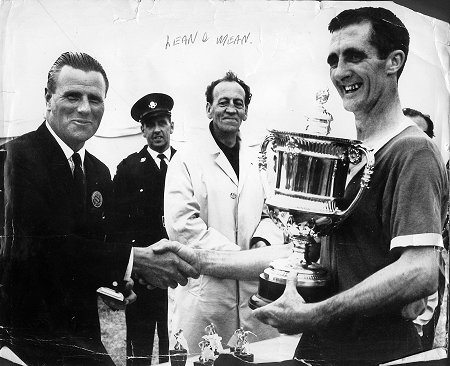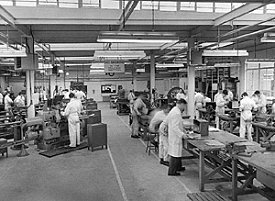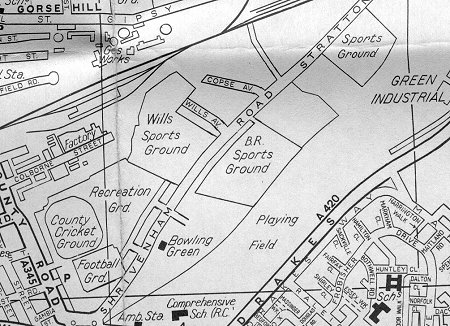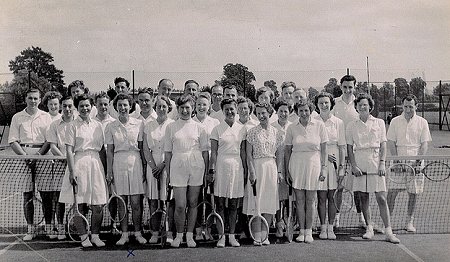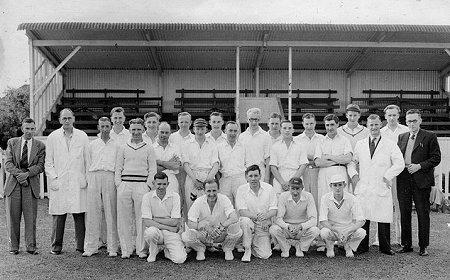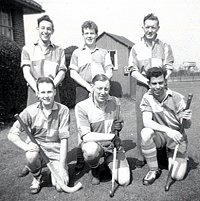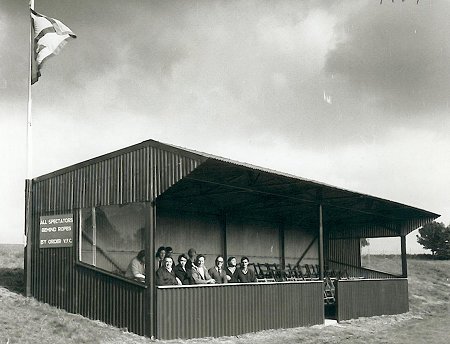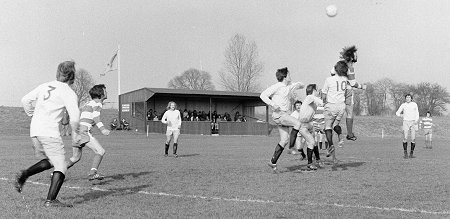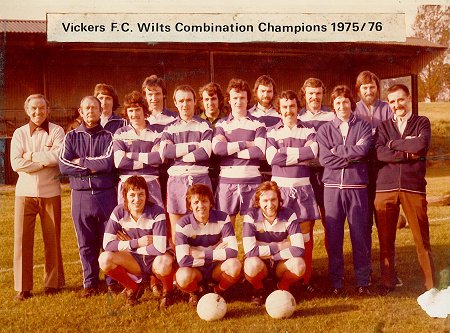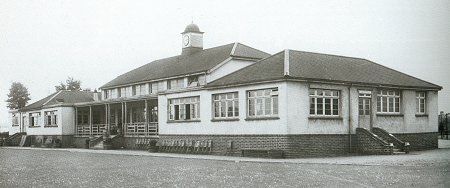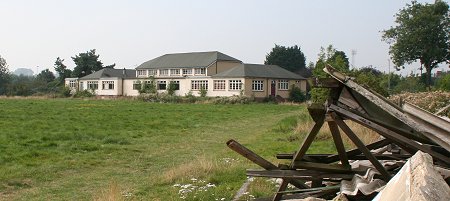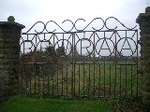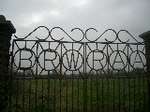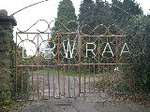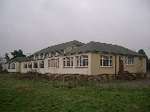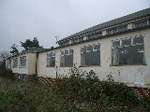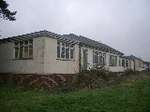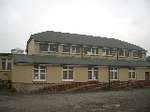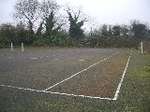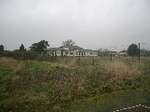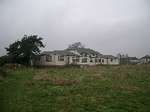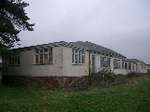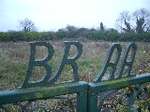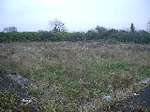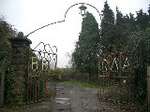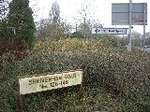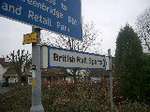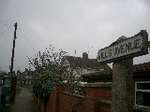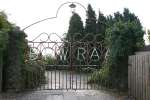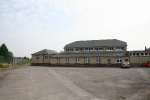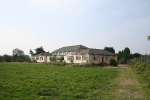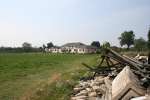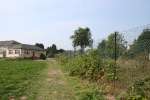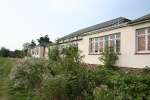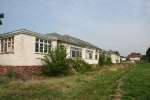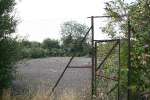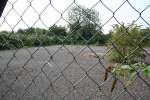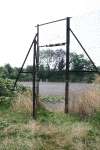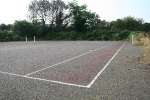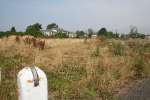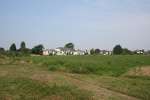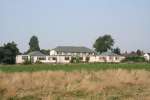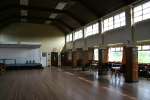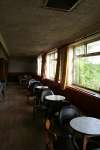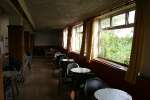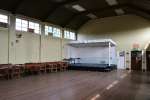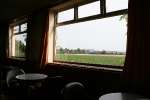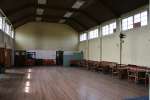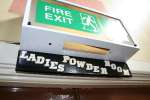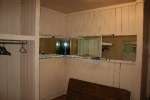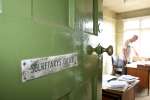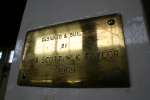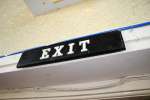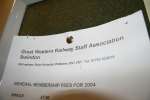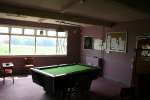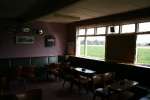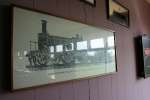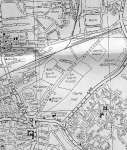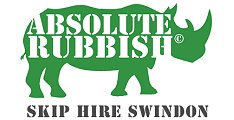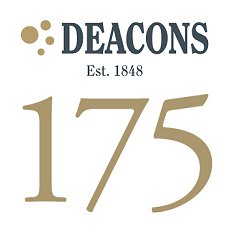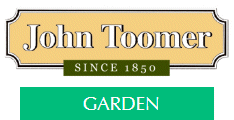Swindon's sporting heyday?
With news of Supermarine expanding & houses on the former BR Ground, we look back at the golden age of Swindon's big work-related sports clubs.
The period between the Second World War and the 1970s was a kind of golden era in Swindon as the town enjoyed what was probably a unique position in the sporting life of the nation.
But it wasn't the emergence and occasional national glory of its football and speedway teams that gave the town its unique sporting status - it was the extent of its work-related clubs.
GWR, Plessey, Garrard, Wills & Vickers
These raised the provision of amateur sport to heights hardly seen elsewhere in the country - even though they were taken for granted by most workers in the town.
Swindon's biggest employers - the GWR, Plessey, Garrard, Wills and Vickers - were effectively competing with each other to provide the best sports and social facilities and raise the best teams. When these companies were recruiting skilled labour, job advertisements would invariably underline the fact that they could boast a sports and social club, in an attempt to lure the town's best workers.
Unlike many aspects of 20th Century life in Swindon, the idea of sports grounds didn't start with the railways. In fact, the GWR was a little slow off the mark, not getting its sports ground until 1931. Municipal sports and recreation grounds, provided not by the railway company but by the council, were already long established, the County Ground having opened in 1897. And private companies had already started to develop their own, private facilities in the 1920s. Gramophone and record turntable manufacturers Garrard opened a sports ground in Stratton Road. This was the brainchild of Herbert Slade who headed the company and was an avid supporter of local football and cricket. The site of the ground, which even included a small grandstand, is now lost under the Greenbridge retail park development, but is commemorated in a street name, Garrard Way.
Tobacco firm WD&HO Wills also had its own sports ground, off Colborne Street, by the mid-1920s, which had football pitches and a bowling green. Sadly, within months of celebrating its 75th anniversary in 2001, Wills Bowling Club's site was sold off and is now completely covered by Tesco's huge supermarket in Ocotal Way. The opening of the GWR Sports Ground - which is discussed in a separate article below - took place on May 2, 1931, although the pavilion did not open until four years later.
The electronics firm provided an impressive sports ground for its workforce on Ermin Street in Stratton and also opened a social club in Gorse Hill - ironically on the former site of the Mechanics' Institute's reading rooms. At the other end of Gipsy Lane, car body manufacturers Pressed Steel Fisher also had a social club (but not a sports ground) - now absorbed into the Dockle Farm House pub. But there was one venue that was unique among Swindon's benevolent employers. While Garrard provided a rifle range for workers at its Newcastle Street factory and British Railways employees had a canteen inside the Railway Works that doubled as a dance hall, only one firm - Vickers - had a social and sports club on a single site - and this was also on the same site as its works, uniquely bringing work and leisure together. Vickers would become another important name in the industrial history of Swindon after the Second World War, although the origins of its airfield and factory at South Marston go back slightly earlier, to 1940. It was then that the site was set up to shadow the already well established Phillips and Powis Aircraft Ltd factory at Woodley, near Reading, to produce training aircraft for RAF pilots - and later saw production of the legendary Supermarine Spitfire. After the war, in October 1945, the airfield and the factory were bought by Vickers, and Supermarine planes continued to be repaired and modified there in the 1950s - by then called the Vickers-Armstrongs Ltd's Supermarine Division. The company wasted little time in subsiding sports, and the Vickers Sports and Social Club was born soon after Vickers took over the site after the war. A sport that became an instant favourite was bowls, with a former army hut being turned into the bowlers first clubhouse. But this was only one of many sports played there, along with football, cricket, tennis, table tennis, snooker and even archery. The social club also provided a venue for a bridge club, a motor car club, whist drives and the like. Heavily subsidised by Vickers but paying a few pennies a week for membership, workers even made the most of the facilities during their lunch hours, when six-a-side football leagues and bingo sessions were organised. One group even built a new stand on the main football pitch during their lunch break in the early 70s, such was the commitment of the workforce to the sports club.
South Marston workers were also able to forge links with other Vickers sites around the country by organising inter-factory sporting matches at the club, along with large annual sports days. And Vickers also provided a focus for activities involving local people who didn't work for the company. Mammoth six-a-side football tournaments at Vickers proved the annual highlight of the summer football scene in Swindon and the surrounding area. In the clubhouse, meanwhile, countless dances, which weren't restricted to members, attracted some of the leading big bands of the era, such as Victor Sylvester, and large followings. It is a measure of the influence and importance - not to mention the affection - surrounding the Vickers club that when the firm itself closed its operation in Swindon in the 1980s, it didn't fold.
Club saved
When Honda bought the airfield in the mid-1980s to build its car plant - which would eventually lead to it becoming the town's biggest employer, after Swindon Borough Council - and the rest of the site was redeveloped into an industrial estate, you could be excused for thinking that the Vickers club and the Supermarine name would be gone forever. But a new club rose from the ashes of the old one in 1985, albeit moved a couple of hundred yards along the road towards Highworth. The decision to name the new club after the Supermarine brand of aircraft that were once produced there has seemingly inspired the club to even greater heights. Today the site is home to three senior rugby pitches, areas for junior sports, a floodlit training area, a six-a-side football pitch, three full-size football pitches and an all-weather surface. The main site is now administered by the rugby club and Supermarine is effectively a collection of separate clubs. Swindon Supermarine Football Club has its own discrete part of the site, and since 2004, the bowls club has also passed into separate ownership. But all are thriving and, if anything, enjoying sport at an even higher level than before. The rugby club is a relative newcomer, having been founded in 1958, and it did not change its name and move to its current home until 1990. Today it fields at least two senior sides a week, but perhaps is best known in rugby circles for its junior section, which has a reputation for being one of the best in the country.
While the bowls club celebrated its 60th anniversary in 2007, the football club was also celebrating after winning promotion to the Southern League - the highest level of football ever played by any team in Swindon other than Swindon Town. A team that has since gone onto reach the second round proper of the FA Cup in 2010 (see link below).
Archery, a sport played at Vickers for many years, is also still thriving, with the Supermarine Bowmen still meeting regularly at the club. With the former GWR Sports Ground in Shrivenham Road about to be buried under houses in a major redevelopment, Supermarine is effectively the only physical reminder of an era when sports and social matters made Swindon what you could call a leader in its field. GWR sports By the 1930s, railway workers in Swindon had just about everything they needed to live a social life that was virtually unique for the age. From the earliest days of the Great Railway in Swindon in the 1840s, a policy of social wellbeing and relative good health was a feature of life in the town.
A beacon of this atmosphere of self-betterment was the workers stunning Mechanics Institute but even this was eclipsed by the GWR Medical Fund which provided a 'cradle to grave' service, including a hospital - the whole thing being a microcosm of a national health service and, indeed, it was eventually used as a model for the NHS. Along with their families, Swindon's railway workforce - which had peaked at around 15,000 in the mid-1920s - enjoyed access to washing, swimming and even Turkish baths, a theatre, an impressive library that even included a wire service bringing the latest news, a barber and various other facilities and services which even included a company undertaker. Only one piece was missing from the jigsaw - a sports ground. The GWR Park in Faringdon Road had been a part-time cricket ground that was graced by Dr WG Grace but was now a venue only for informal sports. A dedicated, high quality sports ground was, if anything, slow in coming. Two of the town's emerging other employers - and major firms other than the railway company were still something of a novelty then - had already provided sporting facilities for their workers, namely Garrard and Wills. And even after it was mooted, the delivery of the new GWR sports ground was delayed. It had been promised as early as January 1928, while the land was purchased from the Goddard estate in the following August.
But difficult economic conditions, including short-time working, which was re-introduced just ten days before the sports ground first opened on May 2, 1931, meant that some major elements of the grand plan were still on the drawing board. There were football and cricket pitches, a bowling green and six tennis courts (three hard, three grass) from the outset, while hockey, athletics and putting also became popular pursuits there. But a rifle range was not added until 1933, and the jewel in the crown of the 13-acre site, its pavilion, was only finally opened in 1935. This provided not only a social club but also a base for indoor sports such as table tennis and badminton.
Late or not, in terms of the affection it seemed to generate among the Swindon workforce, the sports club was perhaps rivalled only by the Mechanics' Institute. Apart from the obvious benefits and the central role it played in workers' leisure time, there are other reasons for this. Firstly, it was far enough removed from the Works, geographically, to give it the air of a campus and give the sports ground an atmosphere of escapism. Its siting in Shrivenham Road made it easily the furthest outpost of the GWR's Swindon 'empire', which was otherwise mostly restricted to the Works itself and buildings in its shadow. The pavilion, which was designed by the company's own architect, was also probably the most aestetically pleasing railway building in the town, and is usually described by official GWR literature at the time as 'handsome'. A description of the building when it was new said it was 'a particularly symmetrical example of mid-modern architectural design' and explained: 'It is of brick construction throughout, and presents a very harmonious exterior, the grey cement with which the upper part is faced, toning excellently with the roof of cedar shingles. A verandah is situated at the front of the pavilion, and there is a large car park in the rear.' A separate organisation was set up to run it, called the GWR (Swindon) Athletic Association, and its president, Mr J Auld, presided over the opening ceremony on April 26, 1935, in front of a large crowd which included CB Collett, the company's Swindon-based chief mechanical engineer.
There was a happy coincidence in that the opening of the pavilion took place in the centenary year of the GWR, and to underline its status as 'one of the finest grounds in the West of England', it was already due to host county cricket and bowls matches. Lord Dulverton, a director of the GWR, who performed the official opening, was applauded when he told the crowd that the new facilities would help workers 'show that they excelled in sport as in the past Swindon had always excelled in workmanship'. As well as changing rooms and washing facilities, the pavilion had a 'lofty' recreation room which was decorated in oak and had lighting that was 'distinctly modern in design', plus a floor of Canadian maple. There was capacity for around 200 people.
A baby grand piano and - more exciting for the age - a radiogram were provided as entertainment at functions. With a tea room at one end and a room 'for general refreshments' at the other, which included a bar, the building also had a skittle alley at the back. A particularly impressive feature of the kitchen was an ice cream freezer. The GWR's attention to detail, which was typical of the its whole approach, especially in Swindon, is borne out in the building's clocks, including one that sat proudly on a small tower. These were all electrically controlled by a master clock. For the more than 50 years the sports ground would generate much affection among many railway workers and the enterprise also proved a benefit to the town in general as the Swindon Athletic Association was allowed to affiliate to the GWRSAA (or the BRWRAA as it became after nationalisation - initials that were emblazoned across the front gates of the site). But there was an irony to its success. It was a kind of crowning glory of Swindon's railway heritage and came just as the heyday of the industry - marked by the production of the flagship King class locomotives of the late 1920s - was passing. Swindon Works, in fact, was beginning the long, slow decline that would culminate in its closure in 1986. The sports club remained open even after the Works closed, but there was a bitter end to the story as developers eyed the land and arguments raged over what should happen to it, before it was finally sold in 1997. Although the Great Western Railway Staff Association was able to lease the pavilion, an air of inevitability soured the latter years, and it was a surprise to no-one when the GWR sports era finally came in August 2005 as the club's gates closed for good. Development of the area for housing is now looking increasingly likely. Whether it now generates good memories or leaves a bad taste in the mouth, there is no doubt that the GWR sports ground was a symbol of Swindon's success and proud social and industrial heritage - and was held dear by many local people.
UPDATE
To mark the end of the sports ground's existence, the business planning on developing the land kindly donated the iconic gates that marked the entrance to the ground to STEAM Museum, for them to add to their existing collection of GWR memorabilia, ensuring that the memory of this much-loved and well-used space is not forgotten.
So a fitting epitaph is probably a verse that appeared in a staff magazine in the 1960s, which was surely written with the sports ground in mind: The afternoon crawls painfully away; The laggard clock slides sluggishly up to three;
Two trolleys trundle forth in bright array;
Now Heaven be praised, they bring our well-urned tea.
|
|
||||||||||||||||||||||||||||||||||||||||||||||||||||||||||||||||||||||||||||||||||||||||||||||||||||||||||||||||||||||||||||||||||||||||||||||||||||||||||||||||
|
|
||||||||||||||||||||||||||||||||||||||||||||||||||||||||||||||||||||||||||||||||||||||||||||||||||||||||||||||||||||||||||||||||||||||||||||||||||||||||||||||||
|
||||||||
|
||||||||
|
||||||||
|
||||||||
|
||||||||
|
||||||||
|
||||||||
|
||||||||
|
||||||||
|
||||||||
|
||||||||
|
||||||||
|
||||||||
|
||||||||
|
||||||||
|
||||||||
|
||||||||
|
||||||||
|
|||||||||
|
|||||||||





